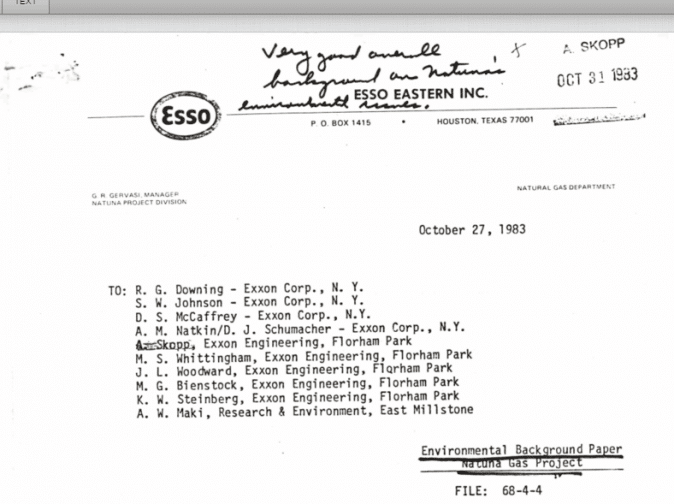This October 31, 1983 letter and attached report is from Esso Eastern’s Natuna Gas Project Division’s Manager G. R. Gervasi circulated to a number of executives, engineers, and scientists in Exxon Corporation about the development of the East Natuna gas field.
The letter discussed a number of concerns with the project, with a focus on carbon dioxide and sulphur oxide emissions. The report outlined potential mitigative solutions, noting “[t]he most direct and lowest cost means of disposal [to be] by incineration and discharge to the atmosphere.” Though the most affordable method, the report flagged that direct-air release “raises environmental questions concerning the ‘greenhouse’ effect of the CO2 and acidic deposition (or ‘acid rain’) of the SOx.”
While acknowledging the impact of CO2 emissions, the report concluded that “given the industrialization aspirations of the Indonesian people, the remoteness of the Natuna location, and the high level of economic and socio-political importance which government officials attach to [it], it is unlikely that restrictive emission controls would be imposed on the project … short of any international agreements which institute regulations on a worldwide basis.”


